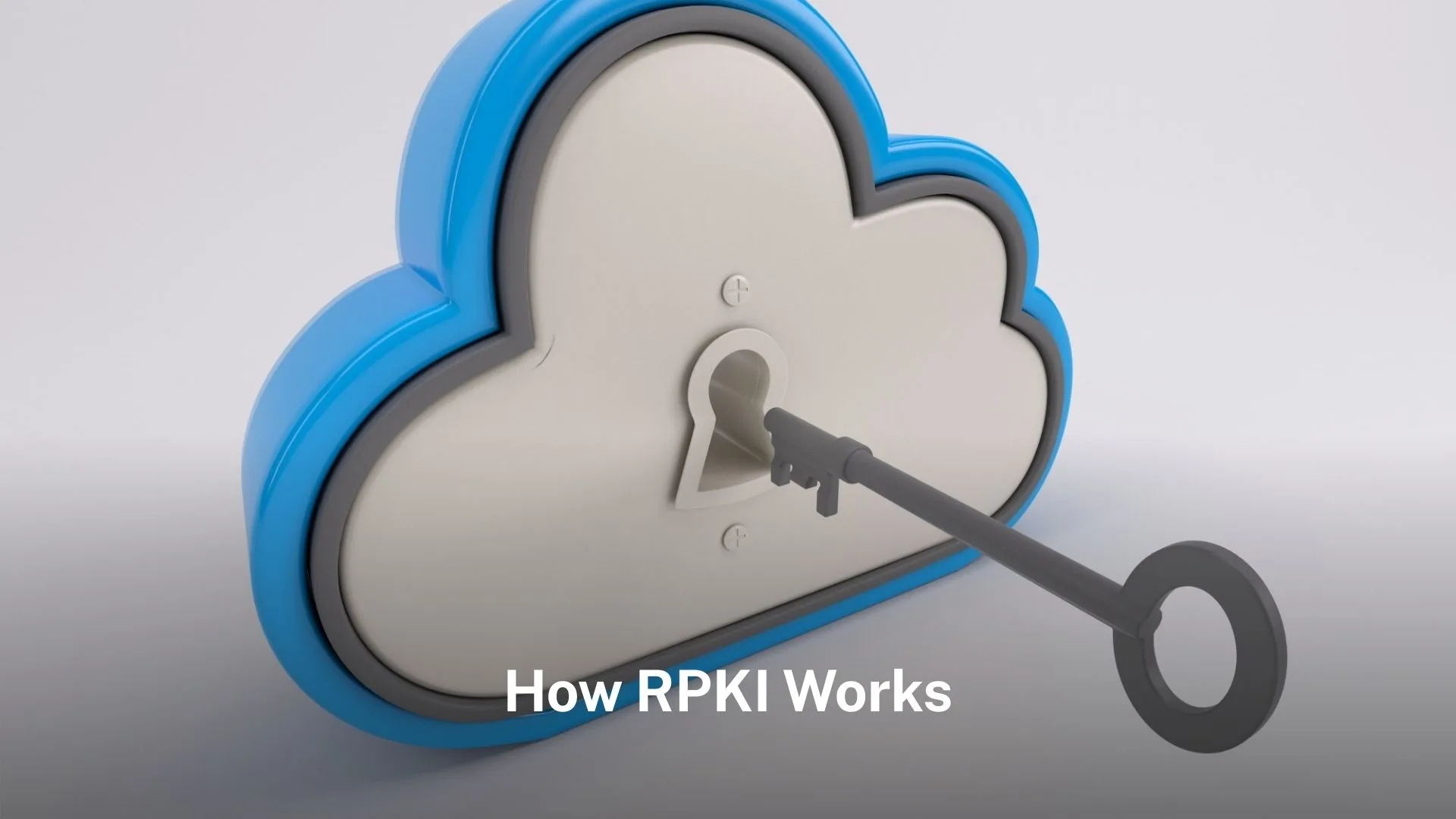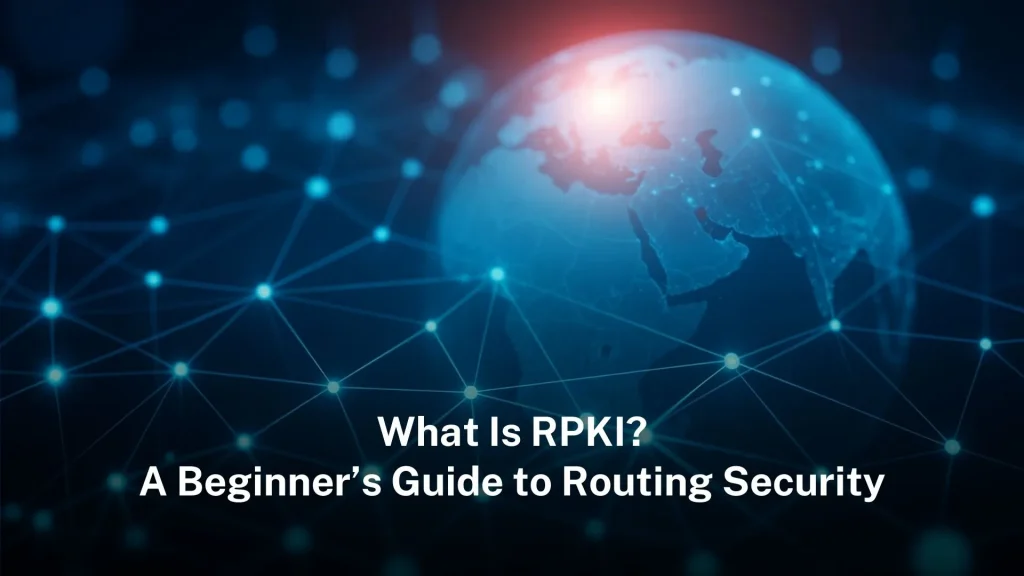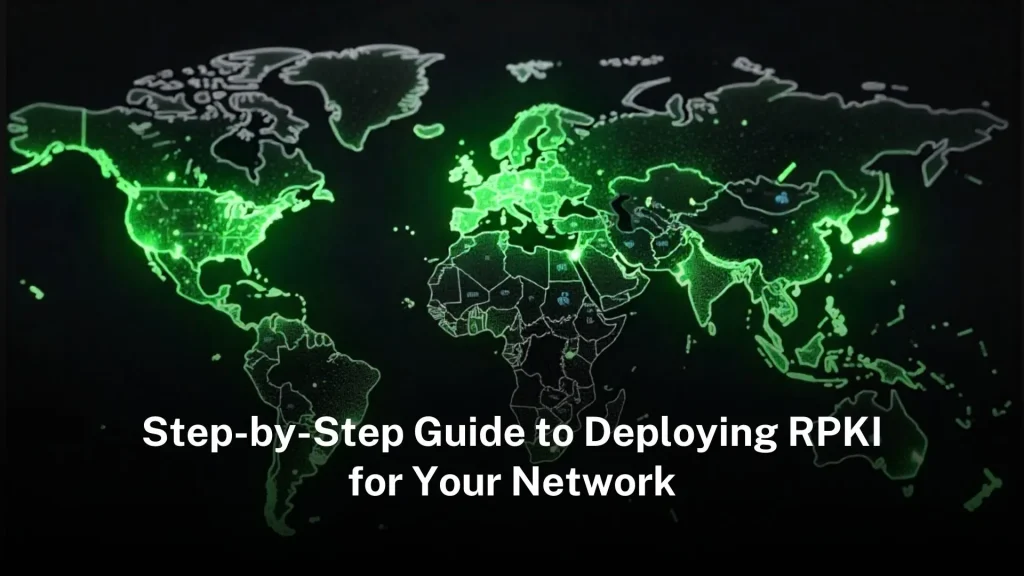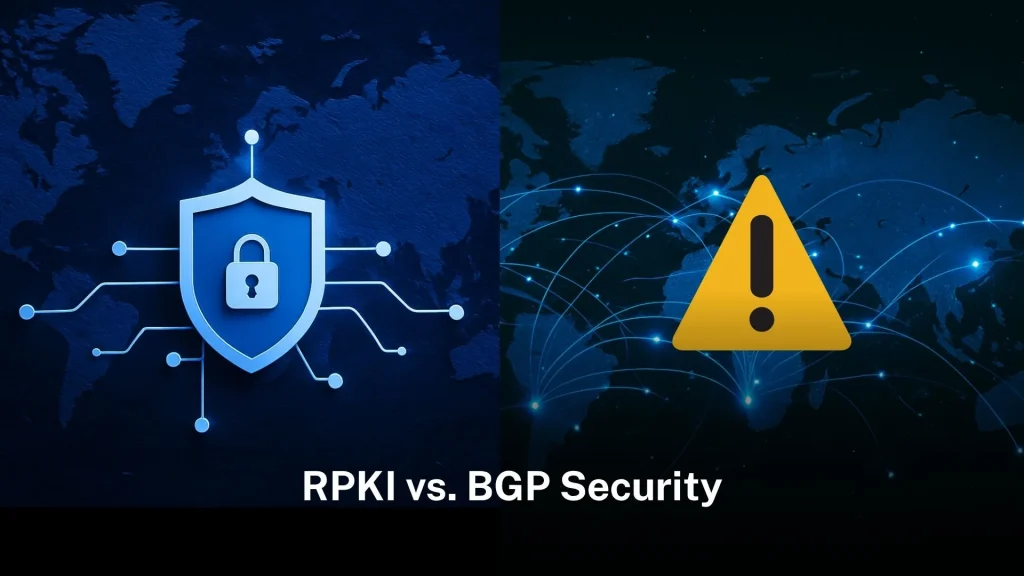Resource Public Key Infrastructure (RPKI) improves BGP routing security by checking that route announcements come from the correct sources. This helps prevent hijacks and leaks and keeps the internet more stable.
Introduction
The Border Gateway Protocol (BGP) controls how data moves across the internet. It links many networks called Autonomous Systems (ASes). These networks can be run by ISPs, companies, cloud providers, or content networks. BGP does not always pick the shortest path. It uses rules and preferences set by each network. This makes networks flexible and scalable. It also makes them open to mistakes and attacks.
BGP was made before security was a priority. It cannot stop misconfigurations or attacks on its own. Route hijacking happens when an AS announces IP addresses it does not own. Traffic can go to the wrong place. Route leaks happen when a network shares routes learned from one provider with another by mistake. Both problems can slow down the internet, cause outages, or expose data.
Some incidents show the risks clearly. In 2008, Pakistan Telecom caused YouTube to go down worldwide. Some hijacks are used by attackers to intercept sensitive information in transit. Large networks or cloud providers may also accidentally announce routes incorrectly, which can create widespread problems.
To solve these problems, the internet community created RPKI. It checks if a route announcement comes from the correct AS. Networks can trust the routes they receive. RPKI lowers the risk of errors and attacks. It also helps networks work together more safely.
BGP works in a path-vector way. It does not only look at the shortest path. It considers path attributes like AS numbers, routing policies, and preferences. This is why it is flexible. Large networks can shape how traffic flows. But it also creates risk because networks must trust each other’s announcements. RPKI adds a layer of verification to reduce that trust problem.
What Is RPKI?
RPKI is a cryptographic system for internet routing. It proves that an AS is allowed to send certain IP addresses. It answers the question: “Is this route from a trusted source?”
RPKI relies on trust anchors, which are authorities that check certificates linking IP addresses and AS numbers to their owners. Certificates are issued by Regional Internet Registries (RIRs) such as ARIN in North America, RIPE NCC in Europe, APNIC in Asia-Pacific, AFRINIC in Africa, and LACNIC in Latin America.
These certificates create a chain of trust. Networks can verify that route announcements are correct and authorized. Traditional BGP trusts the operator who announces the route. That can fail if a mistake or attack happens. RPKI changes this by making trust cryptographic. The network can check it automatically.
RPKI is designed to fit the way BGP works. It does not replace routing. It adds verification. Networks can continue to choose paths based on policies, AS relationships, or preferences. The difference is that now each route can be checked against ROAs to ensure the origin is correct.
How RPKI Works
RPKI has three main parts: Certification Authorities (CAs), Route Origin Authorizations (ROAs), and Validators. They work together to verify routes.
Certification Authorities (CAs)
CAs issue certificates showing that an AS owns certain IP addresses. The RIRs act as CAs in their regions. They create a hierarchy where certificates can be verified up the chain.
Resource holders like ISPs, cloud providers, or companies use these certificates to make ROAs. ROAs show which ASes can advertise each IP prefix. This prevents unauthorized entities from claiming addresses. Certificates and ROAs together make a controlled and verifiable system.
Certificates must be updated and managed carefully. Expired certificates or errors can stop valid routes. Some networks automate certificate renewal. Others monitor manually to avoid blocking traffic.
Route Origin Authorizations (ROAs)
ROAs are signed records showing which AS can send an IP prefix. Resource holders publish ROAs in public RPKI repositories. Networks use them to check routes automatically.
For example, AS123 owns 203.0.113.0/24. It creates a ROA authorizing only AS123 to announce that prefix. If AS456 tries to send it, the route is marked invalid. ROAs also include maximum prefix length. This helps networks control route announcements more precisely.
ROAs reduce errors and prevent hijacks. Before ROAs, operators had to check routes manually. Mistakes were common. ROAs make the process automatic and reliable.
ROAs can be combined with routing policies. For instance, a network may prefer certain paths but still reject unauthorized announcements. This adds both security and flexibility.
RPKI Validators
Validators get ROAs and check them against incoming BGP announcements. They classify routes as:
• Valid: Matches a ROA
• Invalid: Conflicts with ROAs or rules
• Unknown: No ROA exists
Routers can block invalid routes and alert operators. Unknown routes may be accepted but flagged for review. Validators make route checking continuous and automatic.
Validators are often paired with monitoring tools. Operators can see which routes are invalid, unknown, or valid in real time. Alerts can prevent mistakes from spreading. Validators also log events for auditing and troubleshooting.
Importance of RPKI
RPKI improves BGP security, stability, and reliability.
Preventing Hijacks: Only authorized ASes can announce prefixes. This stops many hijacks. The 2008 Pakistan Telecom YouTube incident shows how a wrong announcement can affect millions. Doug Madory says: “RPKI has reduced invalid BGP announcements and made large-scale hijacks harder.”
Preventing Route Leaks: Multi-homed networks may leak routes. RPKI checks each announcement. Unauthorized routes are filtered. This avoids inefficient or insecure paths.
Stability: Verified routes reduce the spread of wrong information. ISPs, cloud providers, and end-users benefit. RPKI works with BGPsec to create layers of security. Verified routes also make peering and business relationships safer.
RPKI also supports automation. Networks can validate routes without human intervention. This reduces operational mistakes and improves speed.
Deployment and Adoption
RPKI adoption is growing. Europe and North America lead. Large cloud providers like Google, Cloudflare, and Amazon use it. This encourages smaller networks to follow.
Adoption is affected by complexity. Setting up validators and filters needs careful planning. ROAs must be updated. Expired ROAs can block valid routes. Centralized trust in RIRs is another concern. Smaller networks may lack expertise or awareness.
Job Snijders says: “RPKI is simple in idea but operationally tricky. Monitoring and alerts are needed to avoid problems.”
Tools and automation help. Monitoring solutions, scripts, and guides make deployment easier for networks of all sizes.
Expert Perspectives
Doug Madory:
“RPKI filtering has cut down invalid BGP announcements. Operators can trust traffic paths and the internet is safer.”
Job Snijders:
“Keeping ROAs updated is key. Automation and alerts help avoid mistakes. Operators must understand how filtering affects peering and traffic flow.”
The Future of RPKI
RPKI adoption is expected to grow:
• Automated ROA creation
• Real-time visibility for operators
• Collaboration between RIRs, providers, and researchers
• Integration with BGPsec and telemetry tools
Traffic growth and smarter attacks make securing BGP more critical. RPKI provides a scalable, effective method to check routes and maintain internet trust.
FAQs
1. What is RPKI?
Resource Public Key Infrastructure (RPKI) is a cryptographic framework that secures internet routing by verifying the authenticity of BGP route announcements.
2. How does RPKI prevent route hijacking?
RPKI ensures that only ASes authorized in ROAs can advertise specific IP prefixes, preventing unauthorized entities from redirecting internet traffic.
3. What are ROAs in RPKI?
Route Origin Authorizations (ROAs) are digitally signed statements indicating which ASes are permitted to originate particular IP prefixes.
4. Why is RPKI adoption important?
RPKI adoption enhances internet security by mitigating route hijacks and leaks, improving stability, and ensuring data follows intended paths.
5. What challenges exist in RPKI deployment?
Challenges include implementation complexity, ongoing maintenance, concerns over centralized trust, and the need for operator awareness and training.










Leave a Reply